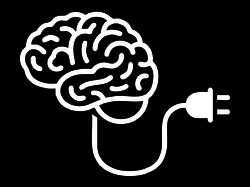The iPhone’s original UI designer on Apple’s greatest flaws
By
Josh Clark
Published Sep 10, 2018
Fast Company offers an interview with Imran Chaudhri, the original designer of the iPhone user interface. According to Chaudhri, Apple knew that the device and its notifications would be distracting, that the personal nature of the phone would soak up attention in entirely new ways. But Apple consciously decided not to make it easy to tone down those distractions:
“Inside, getting people to understand that [distraction] was going to be an issue was difficult. Steve [Jobs] understood it…internally though, I think there was always a struggle as to how much control do we want people to have over their devices. When I and a few other people were advocating for more control, that level of control was actually pushed back by marketing. We would hear things like, ‘you can’t do that because then the device will become uncool.’
“The controls exist for you. They’ve always been there and yet it’s incredibly hard to know how to use them and to manage them. You literally have to spend many days to go through and really understand what’s bombarding you and then turn those things off in a singular fashion. So for the people who understand the system really well, they can take advantage of it, but the people that don’t—the people that don’t even change their ringtone, who don’t even change their wallpaper—those are the real people that suffer from this sort of thing. They don’t have that level of control.”
Since then, Apple has embraced privacy as a competitive advantage versus Android, but Chaudhri suggests that iOS could do more to offer transparency and smart adjustments to personal settings:
“The system is intelligent enough to let you know that there are [apps] that you’ve given permission to that are still using your data, and notifications you’ve turned on that you’re not actually responding to. So let’s circle back and let’s reestablish a dialogue between the phone and the customer, where the phone asks, ‘Do you really need these notifications? Do you really want Facebook to be using your address book data? Because you’re not logging into Facebook anymore.’ There’s a lot of ways to remind people if you just design them properly.”
Seems to me that we should all do a similar inventory of the systems we design. There remain so many opportunities to create interventions to improve user literacy and control over privacy, data usage, and distraction. Responsible design in the era of the algorithm demands this kind of transparency.
Also, when Chaudhry says, “there was always a struggle as to how much control do we want people to have over their devices,” my take is: people should have all the control.





